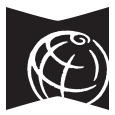Seattle Historic Postcard Collection
Preview up to 100 items from this collection below. Highlights of early 20th century Seattle, as depicted through our historic postcards. Cards include images of buildings, attractions and events from the 1900s to the 1960s along with messages between friends and family.
-
Alaska Building, ca. 1910
The Alaska Building, constructed between 1903 and 1904, was the first building in Seattle to be built with a steel frame. At 14 stories high, it was the tallest building in Seattle until the construction of the Hoge Building in 1911.
Identifier: spl_pc_00206
Date: 1910?
View this item -
King Street Station., ca. 1906
During the early 1900s, there was increasing interest in connecting railroads with Seattle. The high demand and competition between railways resulted in two railway stations being built directly next to each other at 4th Avenue and Jackson Street. King Street Station (which is depicted in this postcard) was constructed in 1906 and can be distinguished by its tower. Union Station, originally known as the Oregon and Washington Station, was constructed in 1911. (Alternative names for Union Station include the Union Depot and the Northern Pacific Great Northern Depot.) The postcard captioning can be confusing because both stations were sometimes referred to as "union stations" due to the fact that multiple railroad lines were shared within the same terminal. For a good example of the differences between Union Station and King Street Station see spl_pc_01011 where Union Station appears in the foreground and King Street Station appears in the background.
Identifier: spl_pc_01019
Date: 1906?
View this item -
Villa Academy, ca. 1977
Sacred Heart's Villa. Missionary Sisters of the Sacred Heart. Currently called Villa Academy.
Identifier: spl_pc_00303
Date: 1977?
View this item -
Elk's Hall at 4th Ave. and Spring St., ca. 1912
Street view of Elk's Hall on Fourth Ave. and Spring Street.
Identifier: spl_pc_00503
Date: 1912?
View this item -
Smith Tower, ca. 1914
Transcribed from spl_pc_00215: "Second Ave and the 42 Story L.C. Smith Bldg. Seattle. U.S.A. Eight elevators-two serving the tower. Six hundred Offices. Six stores. Telegraph office on first Floor. Barber Shop, Restaurant, Buffet in Basement, Thirty-fifth Floor furnished in Washington Fir used as an observatory. Exterior, Washington Granite for first two floors; above white glazed terra cotta. Cost: $1,500,000." Smith Tower was constructed in 1914.
Identifier: spl_pc_00212
Date: 1914
View this item -
City Hall Park, Frye Hotel and Smith Tower, ca. 1915
Street view of City Hall Park, Frye Hotel and Smith Tower. The Frye Hotel was constructed in 1911 and designed by the architects Charles H. Bebb and Louis L. Mendel. The project was funded by Seattle pioneer George F. Frye and his wife Louisa Frye (originally of the Denny family). The hotel was converted to low income housing in the 1970s. Smith Tower was constructed in 1912 under the supervision of the architecture firm Gaggin and Gaggin. It was the tallest building in Seattle until the construction of the Space Needle in 1962.
Identifier: spl_pc_00219
Date: 1915?
View this item -
King Street Station, ca. 1911
During the early 1900s, there was increasing interest in connecting railroads with Seattle. The high demand and competition between railways resulted in two railway stations being built directly next to each other at 4th Avenue and Jackson Street. King Street Station (which is depicted in this postcard) was constructed in 1906 and can be distinguished by its tower. Union Station, originally known as the Oregon and Washington Station, was constructed in 1911. (Alternative names for Union Station include the Union Depot and the Northern Pacific Great Northern Depot.) Confusingly, both stations were sometimes referred to as "union stations" due to the fact that multiple railroad lines were shared within the same terminal. For a good example of the differences between Union Station and King Street Station see spl_pc_01011 where Union Station appears in the foreground and King Street Station appears in the background.
Identifier: spl_pc_01013
Date: 1911
View this item -
St. James Cathedral interior, ca. 1910
Bishop Edward O'Dea purchased the land for St. James Cathedral's First Hill site in 1903 after successfully petitioning the Pope to relocate the episcopal see from Vancouver, Washington to Seattle. The cornerstone for the building was laid in 1905 with more than 5,000 people in attendance and the cathedral officially opened on December 15, 1907.
Identifier: spl_pc_00309
Date: 1910?
View this item -
Federal Building at 3rd Ave. and Union St., ca. 1910
Street view of the Federal Building in downtown Seattle with the White-Henry-Stuart Building and the Pantages Theatre in the background. Construction on the Federal Building (also known as the U.S. Court House, Custom House and Post Office) began in 1903 and ended in 1908. The building was located at the intersection of Union Street and Third Avenue, which was being regraded at the time. The Third Avenue regrade left a gap of four feet down to the new sidewalk which resulted in a new set of stairs being added to the building's exterior. The building was demolished in 1958.
Identifier: spl_pc_00413
Date: 1910?
View this item -
Hotel Lincoln, 1904
Hotel Lincoln was constructed in 1900 at the corner of 4th Avenue and Madison Street. The hotel was destroyed in a fire in 1920.
Identifier: spl_pc_00804
Date: 1904
View this item

